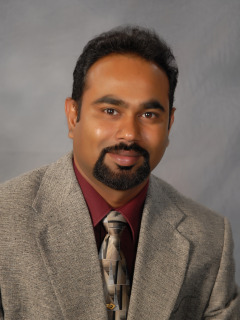
-
Sandun Fernando
- Dow Professor in Bioprocess Engineering, Associate Department Head for Graduate Programs
- Office:
- 303I Scoates Hall
- Email:
- [email protected]
- Phone:
- 979-314-8236
Education
- Undergraduate Education
- B.S., University of Peradeniya – Sri Lanka, Agricultural Engineering, 1995
- Graduate Education
- M.S., University of Nebraska – Lincoln, Agricultural and Biological Engineering, 2001
- Ph.D., University of Nebraska – Lincoln, Agricultural and Biological Systems Engineering, 2003
- Awards
- • Highly Cited Researcher in Engineering (Thomson-Reuters Essential Science Indicators, 2014 -- ranking among the top 1% most cited earning the mark of exceptional impact).
- Teaching Award of Merit, North American Colleges and Teachers of Agriculture (2015).
- Vice Chancellor's Award for Excellence in Teaching (Texas AgriLife Research) (2015).
- Tenneco Oil Exploration and Production Award for Meritorious Teaching in Engineering, Texas A&M University College of Engineering (2015).
- Texas A&M University Association of Former Students Distinguished Achievement Award for Teaching at College-Level (2014).
- Barbara and Ralph Cox ’53 Faculty Fellow 2013-2014, Texas A&M Engineering Program (College of Engineering / Texas Engineering Experiment Station).
- Presidential Citation from the Institute of Biological Engineering for exemplary service to IBE (2012).
- Montague Center for Teaching Excellence Scholar (Texas A&M University)(2012)
- Teaching Excellence Award – The Texas A&M University System (2011)
- Student Led Award for Excellence in Teaching (SLATE) – The Texas A&M University System (2010).
Areas of Expertise
- Enzyme-substrate-ligand interactions (for bioenergy, biosensing applications)
- Protein-ligand interactions (antiviral agents, antimicrobial agents, drugs)
- Catalysis (bioenergy, fuel cells)
- Surface functionalization (SAMs, separations)
Professional Summary
Our laboratory is interested in understanding and harnessing the power of biomolecular interactions. Biological systems thrive as a result of complex intermolecular interactions and deciphering these will help engineer products and processes that are critical to our day to day needs. We utilize molecular dynamic simulation assisted techniques to understand processes at a molecular level followed by experimental verification.
Some example projects that we continue to be involved in include:
- Enzyme-substrate-ligand interactions (for bioenergy, biosensing applications)
- Protein-ligand interactions (antiviral agents, antimicrobial agents, drugs)
- Catalysis (bioenergy, fuel cells)
- Surface functionalization (SAMs, separations)
We use Enhanced Ligand Exploration and Interaction Recognition Algorithm (ELIXIR-A), a platform under development in our laboratory, that uses molecular dynamics simulations to analyze intermolecular interactions for underpinning interaction points. We have the capability of sending multiple ligands simultaneously toward a receptor in an environment that closely resembles a cellular/solvent environment while the protein receptor is flexing. Interaction points identified from such a dynamic environment can be used to make highly accurate predictions of ligand-receptor behavior in the real world. We use these interaction points to understand catalyst-substrate-inhibitor behavior at a molecular level. We are using ELIXIR in high-throughput ligand (inhibitor) screening, elucidating electronic signaling in oxidoreductases and even in the development of synthetic enzymes.